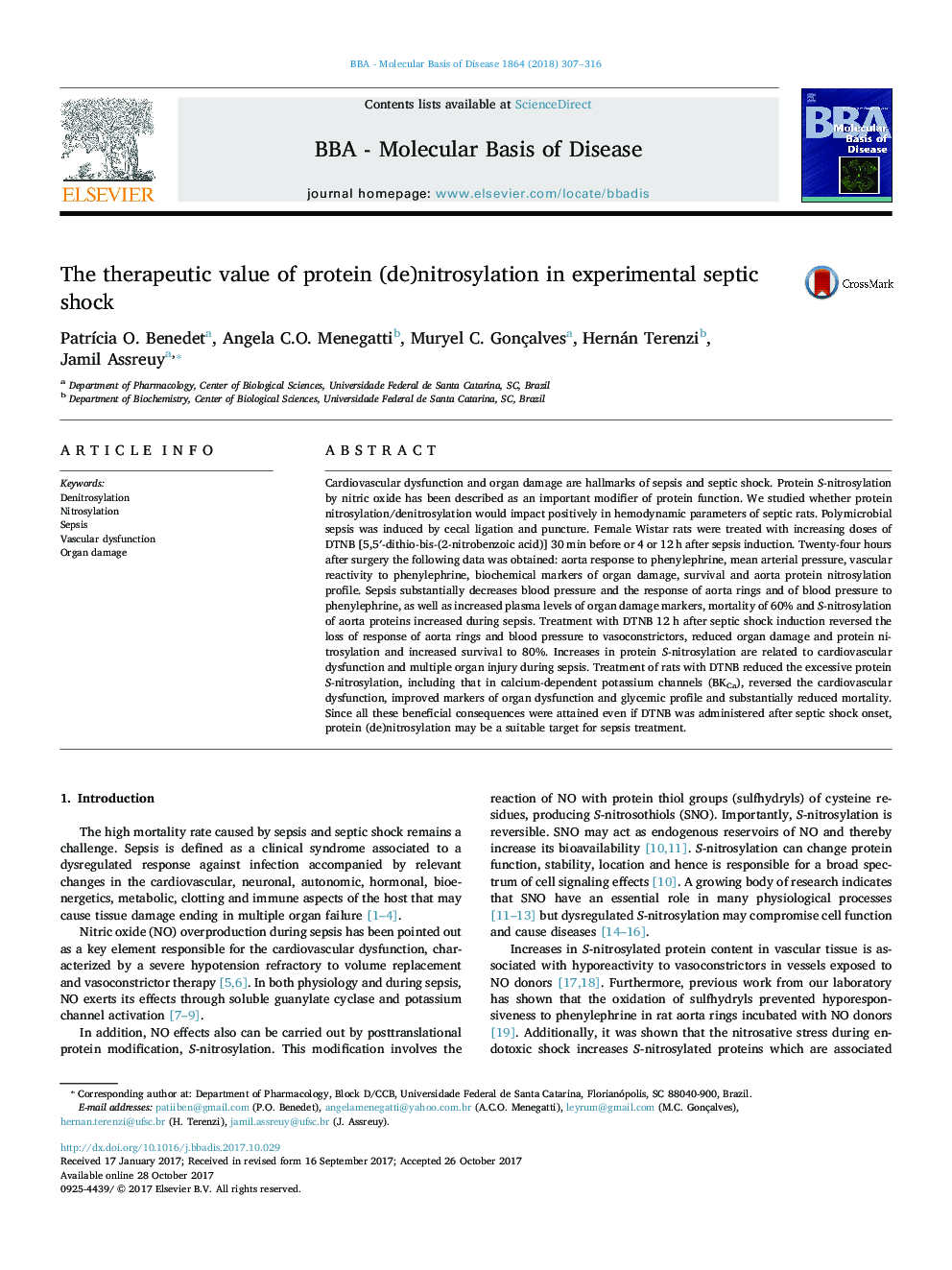| کد مقاله | کد نشریه | سال انتشار | مقاله انگلیسی | نسخه تمام متن |
|---|---|---|---|---|
| 8258819 | 1534613 | 2018 | 10 صفحه PDF | دانلود رایگان |
عنوان انگلیسی مقاله ISI
The therapeutic value of protein (de)nitrosylation in experimental septic shock
دانلود مقاله + سفارش ترجمه
دانلود مقاله ISI انگلیسی
رایگان برای ایرانیان
کلمات کلیدی
موضوعات مرتبط
علوم زیستی و بیوفناوری
بیوشیمی، ژنتیک و زیست شناسی مولکولی
سالمندی
پیش نمایش صفحه اول مقاله

چکیده انگلیسی
Cardiovascular dysfunction and organ damage are hallmarks of sepsis and septic shock. Protein S-nitrosylation by nitric oxide has been described as an important modifier of protein function. We studied whether protein nitrosylation/denitrosylation would impact positively in hemodynamic parameters of septic rats. Polymicrobial sepsis was induced by cecal ligation and puncture. Female Wistar rats were treated with increasing doses of DTNB [5,5â²-dithio-bis-(2-nitrobenzoic acid)] 30Â min before or 4 or 12Â h after sepsis induction. Twenty-four hours after surgery the following data was obtained: aorta response to phenylephrine, mean arterial pressure, vascular reactivity to phenylephrine, biochemical markers of organ damage, survival and aorta protein nitrosylation profile. Sepsis substantially decreases blood pressure and the response of aorta rings and of blood pressure to phenylephrine, as well as increased plasma levels of organ damage markers, mortality of 60% and S-nitrosylation of aorta proteins increased during sepsis. Treatment with DTNB 12Â h after septic shock induction reversed the loss of response of aorta rings and blood pressure to vasoconstrictors, reduced organ damage and protein nitrosylation and increased survival to 80%. Increases in protein S-nitrosylation are related to cardiovascular dysfunction and multiple organ injury during sepsis. Treatment of rats with DTNB reduced the excessive protein S-nitrosylation, including that in calcium-dependent potassium channels (BKCa), reversed the cardiovascular dysfunction, improved markers of organ dysfunction and glycemic profile and substantially reduced mortality. Since all these beneficial consequences were attained even if DTNB was administered after septic shock onset, protein (de)nitrosylation may be a suitable target for sepsis treatment.
ناشر
Database: Elsevier - ScienceDirect (ساینس دایرکت)
Journal: Biochimica et Biophysica Acta (BBA) - Molecular Basis of Disease - Volume 1864, Issue 1, January 2018, Pages 307-316
Journal: Biochimica et Biophysica Acta (BBA) - Molecular Basis of Disease - Volume 1864, Issue 1, January 2018, Pages 307-316
نویسندگان
PatrÃcia O. Benedet, Angela C.O. Menegatti, Muryel C. Gonçalves, Hernán Terenzi, Jamil Assreuy,